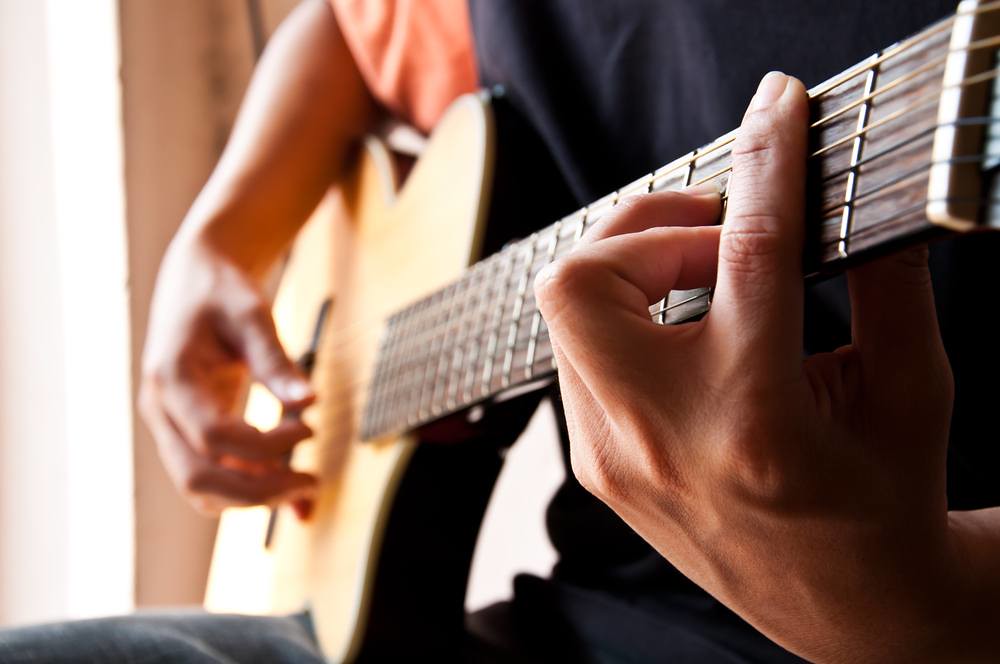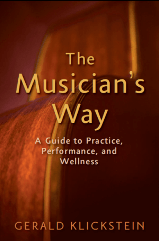
–The Musician’s Way, p. 4
All of us veteran musicians share the same twin aims when we practice: to polish our skills and prepare music for performances.
We also know how to accomplish our goals efficiently.
We understand which skills to work on and how to improve and maintain them. Plus, we possess arsenals of strategies to bring repertoire to stage-ready condition.
The following concepts help aspiring musicians acquire comparable expertise. All are fleshed out in The Musician’s Way.
Bear in mind that I’m talking about deliberate practice and not referring to recreational music making.
Polishing Skills & Preparing Performances
The practice that we professional musicians do encompasses all of the things that empower us to perform artistically. So, although we pursue two basic aims, we do so in interconnected ways.
In contrast, misguided music students often concentrate their efforts on the mechanical aspects of execution and neglect the holistic processes essential to artistic performance.
As a result, such students endure performance anxiety and other frustrations when, if they had known how to practice, their spirits could have soared.
Complete Music Practice
To help students work effectively, I advise them to sort their practice material into five zones.
Each zone consolidates specific tasks and calls for distinct practice skills. In total, the zones comprise the complete picture of what we musicians need to do to attain proficiency.
As shown below, zones 1-3 span the processes involved in preparing repertoire for performance; zones 4 and 5 address polishing skills in two general categories: technique and musicianship.
By working intelligently in all 5 zones, we advance our foundational abilities in tandem with our powers as performing artists.
The 5 Practice Zones
- New Material: To tackle an unfamiliar piece, I recommend that we first establish an interpretive/technical plan and then work in sections at slow tempos.
- Developing Material: As soon as we can execute a piece slowly, we increase our tempo, refine our interpretation, and, when appropriate, memorize.
- Performance Material: When a composition reaches or nears its final tempo, we practice performing it and continually elevate our artistry.
- Technique: To build and maintain technique, we explore diverse exercises and etudes, solving problems as they arise.
- Musicianship: Our work in this zone incorporates sight-reading, rhythm drills, improvisation, and more.
It takes time to build up comprehensive practice skills, but the journey brings lifelong rewards. All musicians, therefore, benefit from regular assessment of their practice habits.
Visit the Downloads page at MusiciansWay.com for free aids such as practice sheets, logs, and schedules.
Related posts
Assessing Your Practice Habits
Beautiful Repetition
Performance-Oriented Practice
The Self-Motivated Musician
© 2012 Gerald Klickstein
Photo © jiggo, licensed from Shutterstock.com


The “5 Practice Zone” seems like a great way to plan out your practice session. You would be surprised how many people just start playing without anything in place to use as a guide. If you can identify what needs work and make an intentional plan to work on it, you will get a lot more done in a shorter amount of time.
Thanks for the insightful comment, Roy. I heartily concur with your view – our development as artists depends on both deliberate practice and also diverse kinds of musical study and exploration.
I find that we can incorporate the topics you mention into the “Musicianship” category – e.g., we teachers can assign students reading & listening assignments; students can gather in reading groups.
As I see it, what matters most, which you infer as well, is that we find joy in expanding our musical literacy and that we embrace the lifelong process of artistic growth.
I wonder if the term “practice” does not quite describe the totality of the activities that build our skills as musicians and artists. Alongside of the five practice zones that you have so beautifully defined, Gerald, perhaps there could be another zone or two for artistic growth and exploration. Perhaps a third of the time that I spend at home with my instruments, violin and piano, I devote to reading new repertoire, playing through old repertoire, or just messing around. I feel that this time is essential to my growth as a musician and instrumentalist, and also essential for my personal fulfillment.
As a student I was told many times, “This isn’t practicing. You’re just slopping through stuff; developing bad habits as well as wasting time.” I fundamentally disagree with that POV. One of my beliefs is that the way to really get into the musical language of any composer is to know a broad cross-section of his works. For example, in the course of years of reading and exploring the music of Beethoven on the violin and the piano, I have probably at one time or another gotten to know, hands-on, about 80 – 90% of his music. Of course, only a small fraction of that has been worked up to performance level. But the totality has given me a familiarity with Beethoven’s musical world and fluency with his language, that can never be achieved by merely knowing the violin concerto and a few sonatas and practicing them to perfection.
Hi Barbara Ann – Thanks for high-five about my 5-zones structure! Best of luck with your upcoming performances. After you’ve completed them, I invite you to add a new comment here telling us how things went and about which preparatory strategies helped you most.
Hi
Liking the ‘5 zones’ idea very much. Right now I have an upcoming concert, diploma recital and masterclass on my horizon – I think the zones can help prioritise and increase practice efficiency so thanks for that!
Best regards
Barbara Ann